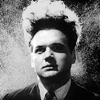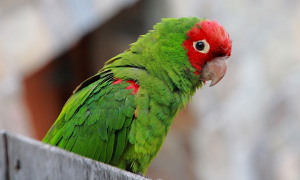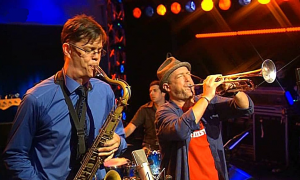Home » Jazz Articles » Genius Guide to Jazz » A Rosenwinkel by Any Other Name
A Rosenwinkel by Any Other Name
For the record, Your Own Personal Genius' name has 14 letters, which certainly places me among the biggest names. And if I really wanted to turn this into a pissing contest, I could haul out my given name Jeffrey and thus place my 17-letter stamp atop the upper echelons of jazz where it belongs anyway as the Dean of American Jazz Humorists ©. And if the Queen of Plum Creek, related to jazz by marriage, were to haul out her full, legal 23-letter behemoth Tara Heberling Fitzgerald...
No more callers, we have a winner.
Yet another in the long line of great jazz musicians from Philadelphia (#357 of 500. Collect the whole set), Rosenwinkel was born in 1970, 200 years after the Boston Massacre. In 1990, this fact would lead him to leave Boston's Berklee School of Music after only 2 years because you never know when something like that might happen again.
Kurt had the fortune of growing up in a musical home. His parents frequently played twin grand pianos like Ferrante and Teicher, both giving young Kurt a solid musical background and allowing an eager lad from the mountains of Virginia to someday realize his lifelong dream of successfully executing a rare Ferrante and Teicher gag.
Taking up the guitar as a teenager, and aspiring to more than just growing a mullet and playing "Crazy Train" until it no longer impressed vo-tech chicks, Kurt found his inroad to jazz in Philly's WRTI radio station. Soon, he and several likeminded pals were jamming regularly at the Blue Note club (not that one, the other one. No, the other one). It was this experience that would propel the burgeoning talent to Berklee, and we already know how that turned out.
Joining Gary Burton's band, and a distinguished fraternity of guitarists (Gamma Delta Chi) that includes Pat Metheny and rush chairman Larry Coryell, Kurt cut his teeth with the venerable vibraphonist (who himself had worked with virtuoso violinist Stephane Grappelli, and thus exhausted the entire V section of alliterations in the Jazz Writer's Handbook).
Moving to Brooklyn in hopes of acquiring a cool Bugs Bunny accent, Kurt continued his growth with such groups as Paul Motian's Electric Bebop Band and the Joe Henderson Group. Upon reaching his current height of 6'2" (6'5" in heels), he decided it was time to strike out on his own and seek his fortunes as a leader.
Winning awards in 1995 from the National Endowment for the Arts for comportment and penmanship, Kurt recorded his first solo album entitled East Coast Love Affair, which was released on the Spanish Fresh Sound New Talent label (beware of a similarly-titled release on the spurious Spanish Fly Nude Talent Label).
Working with drummer Jorge Rossy, later of Martini and Rossy fame, Kurt began gigging heavily and honing his abilities, all the while working towards that elusive major label contract he hoped would one day net him enough to realize his dream of owning an entire hat.
So then.
That chance came when Kurt signed with the well-known Impulse! Label, fittingly, on the spur-of-the-moment. Recording an album entitled Under It All for the label, Kurt experimented with a guitar synthesizer he picked up from A Flock of Seagulls' garage sale. Unfortunately, that album has never seen the light of day as the Impulse! Label was picked up by Universal and Kurt was traded to Verve Records in return for a utility keyboardist and a saxophonist to be named later (D'Brickashaw Ferguson, 6'5" 297lbs, Virginia).
Settling in at Verve, Kurt at first had to battle the higher-ups to make his next album, 2001's The Next Step. Verve originally wanted the album to be a tribute to El Kabong entitled The Hits Just Keep Coming. Once the munchies and the inevitable cottonmouth passed, however, Verve execs came around to Kurt's vision for the album and gave him carte blanche to make the album he wanted.
2003 saw Kurt release Heartcore, an essentially self-produced recording that saw the guitarist spend thousands of hours over 2 years recording the project virtually singlehandedly. What took so long? Have you ever tried to hit "play" and "record" at the same time while holding a guitar?
I thought as much.
Since Kurt's ascendance as a solo artist, his sound has evolved into a distinct entity that is a voice unto itself in jazz. Crediting both his smooth, practiced rhythmic fluidity in combination with a flowing legato line, and his preference for Polytone amps (for a coveted Genius endorsement, send my complementary amp C/O the Provisional Geniusdome, Christiansburg, VA) and Boss EQ units (ditto), Kurt's sound has become as instantly recognizable to the jazz fan as Barry Bonds' whine is to baseball fans.
2005 brought what many consider to be Kurt's most recent album, Deep Song. Working with several frequent collaborators, such as chewing tobacco magnate Joshua Redman and frequent Guide whipping boy Brad Mehldau, Kurt has delivered one of his most mature efforts to date. Gone are all the fart sounds, and there is not a single reference to boobs on the whole album.
As he continues to come into his own as a leader, Kurt has taken some deliberate risks to suit his own artistic ideals. Foremost among them was removing himself from the familiar environs of the East Coast jazz scene for the far more challenging cantons of Switzerland. Some feel the move was to take advantage of the Swiss' fabled neutrality to finally gain an upper hand in the "I don't know, what do you want to do?" argument, some felt it was a result of his longtime fascination with needlessly complicated pocketknives, while others felt it had something to do with a secret boyhood crush on the Swiss Miss girl.
Be that as it may.
If the past ten years are any indication, the next ten will see Kurt take his rightful place among the contemporary masters of the instrument (second from the left, standing), along with John Scofield and Bill Frisell. Not to mention another big name in jazz, John Abercrombie (15 letters). If we ever got the chance to work together (as Abercrombie & Fitz), we'd be the two-man tag team champeens of jazz names.
Till next month, kids, exit to your right and enjoy the rest of AAJ.
Tags
PREVIOUS / NEXT
Kurt Rosenwinkel Concerts
Support All About Jazz
 All About Jazz has been a pillar of jazz since 1995, championing it as an art form and, more importantly, supporting the musicians who make it. Our enduring commitment has made "AAJ" one of the most culturally important websites of its kind, read by hundreds of thousands of fans, musicians and industry figures every month.
All About Jazz has been a pillar of jazz since 1995, championing it as an art form and, more importantly, supporting the musicians who make it. Our enduring commitment has made "AAJ" one of the most culturally important websites of its kind, read by hundreds of thousands of fans, musicians and industry figures every month.






















